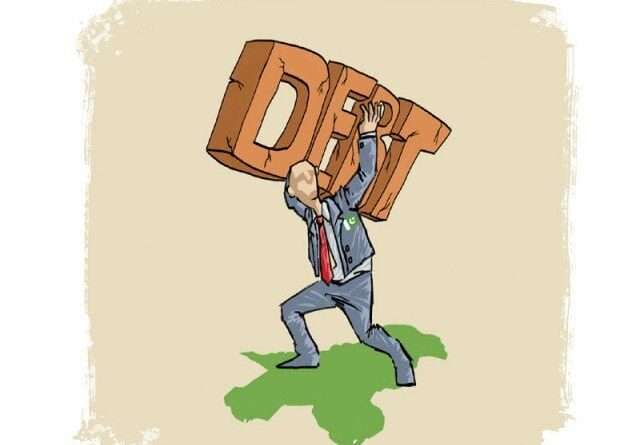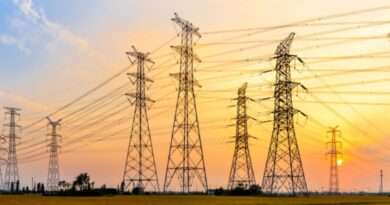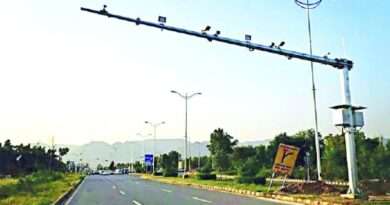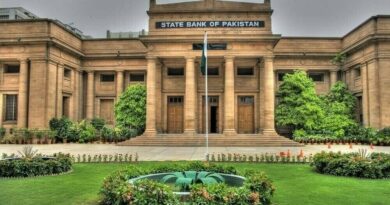Circular Debt Reaches Rs2.384 Trillion: Key Losses Attributed to HESCO and SEPCO
|
Getting your Trinity Audio player ready...
|
Introduction: The Persistent Issue of Circular Debt in Pakistan’s Power Sector
The ongoing challenge of circular debt in Pakistan’s power sector remains a significant concern for the government and the economy. As of the first half of the current fiscal year, circular debt has been recorded at an alarming Rs2.384 trillion, a slight reduction compared to the previous year. Despite the decrease, the sector continues to grapple with substantial losses, totaling Rs158 billion, caused by inefficiencies, theft, and the under-recovery of bills. A significant portion of these losses can be attributed to two major power distribution companies: the Hyderabad Electricity Supply Company (HESCO) and Sukkur Electric Power Company (SEPCO).
This article explores the causes behind the circular debt, the performance of the power sector, and the ongoing efforts to tackle inefficiency, theft, and under-recoveries that exacerbate the problem.
Understanding Circular Debt and Its Implications
What is Circular Debt?
Circular debt in the power sector refers to the accumulating financial liabilities between different entities in the electricity supply chain. This includes debts between power generation companies, distribution companies, and the government, often resulting from delayed payments, inefficiencies, and financial mismanagement. Over time, these liabilities snowball, hindering the growth and operational efficiency of the power sector.
Impact on the National Economy
The continuous rise in circular debt places a heavy burden on Pakistan’s economy. It restricts the government’s ability to invest in improving the energy infrastructure, hampers the efficiency of power distribution, and increases the cost of electricity for consumers. With rising debts, the energy sector struggles to meet its operational costs, often leading to power shortages and unreliable service.
Key Findings: Losses from Power Distribution Companies
Inefficiency, Theft, and Under-Recoveries
According to the Ministry of Energy, the power sector incurred Rs158 billion in losses due to inefficiencies, theft, and under-recoveries in the first half of this fiscal year. Notably, HESCO and SEPCO were responsible for more than half of these losses.
- Inefficiency: This category accounted for Rs106 billion of the total losses, which represents a 38% increase compared to the same period last year.
- Under-recoveries: Losses from under-recoveries amounted to Rs52 billion, showing a marked improvement from the previous year’s losses.
Impact of HESCO and SEPCO on Circular Debt
HESCO and SEPCO, which serve the Sindh province, together contributed Rs82 billion of the total losses. This figure highlights the scale of inefficiency within these two companies and their significant role in the ongoing financial challenges faced by Pakistan’s power sector.
The root causes for these losses include poor governance, technical inefficiencies, power theft, and billing issues that hinder effective revenue collection. These problems are further exacerbated by a lack of robust monitoring systems and outdated infrastructure.
Government Measures and Price Adjustments
Efforts to Tackle the Debt Issue
In response to the growing circular debt, the government has implemented several measures to curb losses and manage the debt cycle. One of the key steps taken was an increase in electricity prices, which aimed to boost revenue collection for the power sector. Despite these efforts, the overall reduction in circular debt has been marginal.
- Price Increases: Monthly, quarterly, and yearly tariff adjustments were introduced, resulting in additional revenue collection. This includes Rs67 billion gained from quarterly and monthly fuel cost adjustments and Rs140 billion from other price modifications.
However, even with these adjustments, losses due to inefficiencies and under-recoveries continue to plague the system. The Power Holding Company Limited (PHCL), which oversees the financial management of the energy sector, continues to face mounting interest charges on loans, further exacerbating the circular debt.
Challenges in Addressing Circular Debt
Political and Institutional Barriers
A significant challenge in resolving the circular debt issue is the political and institutional hurdles that limit reforms in the power sector. One such issue is the ongoing political influence over the management of power distribution companies. Despite the government’s efforts to appoint independent boards for state-owned enterprises (SOEs), including HESCO and SEPCO, there has been resistance due to political alignments, especially with the Pakistan Peoples Party (PPP), which governs Sindh.
The non-restructuring of the boards of HESCO and SEPCO has been a point of contention, as these companies continue to suffer from poor governance and inefficient management. The government’s hesitation to implement changes within these companies due to political agreements has delayed much-needed reforms.
Inefficiencies and Infrastructure Challenges
Another critical issue contributing to circular debt is the outdated infrastructure of power distribution networks, particularly in rural areas. Many distribution companies, including HESCO and SEPCO, continue to rely on inefficient systems that are prone to technical losses. These inefficiencies prevent them from collecting the full amount of revenue due to them, further deepening the debt cycle.
Moreover, power theft remains a persistent problem in many regions, particularly in areas with weak law enforcement. Without effective measures to tackle theft, the distribution companies face significant financial shortfalls.
Progress in Circular Debt Reduction
Fiscal Adjustments and Decrease in Debt
Despite these challenges, the government has made efforts to reduce the circular debt. A fiscal adjustment of Rs20 billion was injected into the system, which contributed to a net reduction of Rs9 billion in circular debt from Rs2.393 trillion in June 2024 to Rs2.384 trillion by December 2024.
While the reduction is marginal, the report from the Power Division emphasizes that the performance was better than expected, particularly when compared to the International Monetary Fund (IMF)‘s projections, which allowed for an additional Rs461 billion in circular debt flow.
The Way Forward: Resolving the Circular Debt Crisis
Institutional Reforms and Governance Improvements
For Pakistan’s power sector to emerge from its circular debt crisis, significant reforms in governance, management, and infrastructure are required. The government must prioritize:
- Appointment of Independent Boards: To ensure proper oversight and accountability, the restructuring of HESCO, SEPCO, and other distribution companies must be expedited.
- Reduction in Power Theft: Strict measures must be implemented to curb power theft, including increased surveillance, better monitoring systems, and more effective law enforcement.
- Upgradation of Infrastructure: Investment in modernizing the power grid and improving billing systems will help reduce technical losses and enhance the efficiency of the sector.
Continued Price Adjustments and Support
Electricity prices will likely continue to rise, and the government must balance these adjustments with the need to protect consumers from excessive price hikes. Additionally, more targeted support mechanisms for the industrial and residential sectors will be essential to mitigate the economic impact of these price increases.
FAQs About Circular Debt in Pakistan’s Power Sector
1. What is circular debt?
Circular debt refers to the accumulated financial liabilities between power generation, distribution companies, and the government, resulting from delayed payments, inefficiency, and mismanagement.
2. Which companies are responsible for most of the circular debt losses?
The Hyderabad Electricity Supply Company (HESCO) and Sukkur Electric Power Company (SEPCO) are responsible for more than half of the Rs158 billion losses due to inefficiencies, theft, and under-recoveries.
3. How has the government tried to reduce circular debt?
The government has implemented monthly, quarterly, and yearly price increases, which have generated additional revenue. Additionally, fiscal adjustments have been made to reduce the debt burden by Rs9 billion.
4. What role does political influence play in the circular debt issue?
Political influence, particularly the PPP’s control over the Sindh region, has delayed the restructuring of boards in power distribution companies, such as HESCO and SEPCO, hindering efforts to improve governance and efficiency.
5. Can circular debt be completely eliminated in the future?
While complete elimination of circular debt is unlikely in the short term, a combination of institutional reforms, infrastructure upgrades, better governance, and reduction in power theft can significantly reduce its impact over time.
Conclusion: The Need for Comprehensive Reforms
Pakistan’s power sector remains in the grip of a circular debt crisis, with Rs2.384 trillion in debt recorded as of December 2024. While the government has made efforts to tackle the problem, including price hikes and fiscal adjustments, the root causes—poor governance, inefficiency, and theft—remain unresolved. Comprehensive reforms, better management, and targeted infrastructure improvements are essential to breaking the cycle of circular debt and ensuring the sustainability of Pakistan’s power sector.




